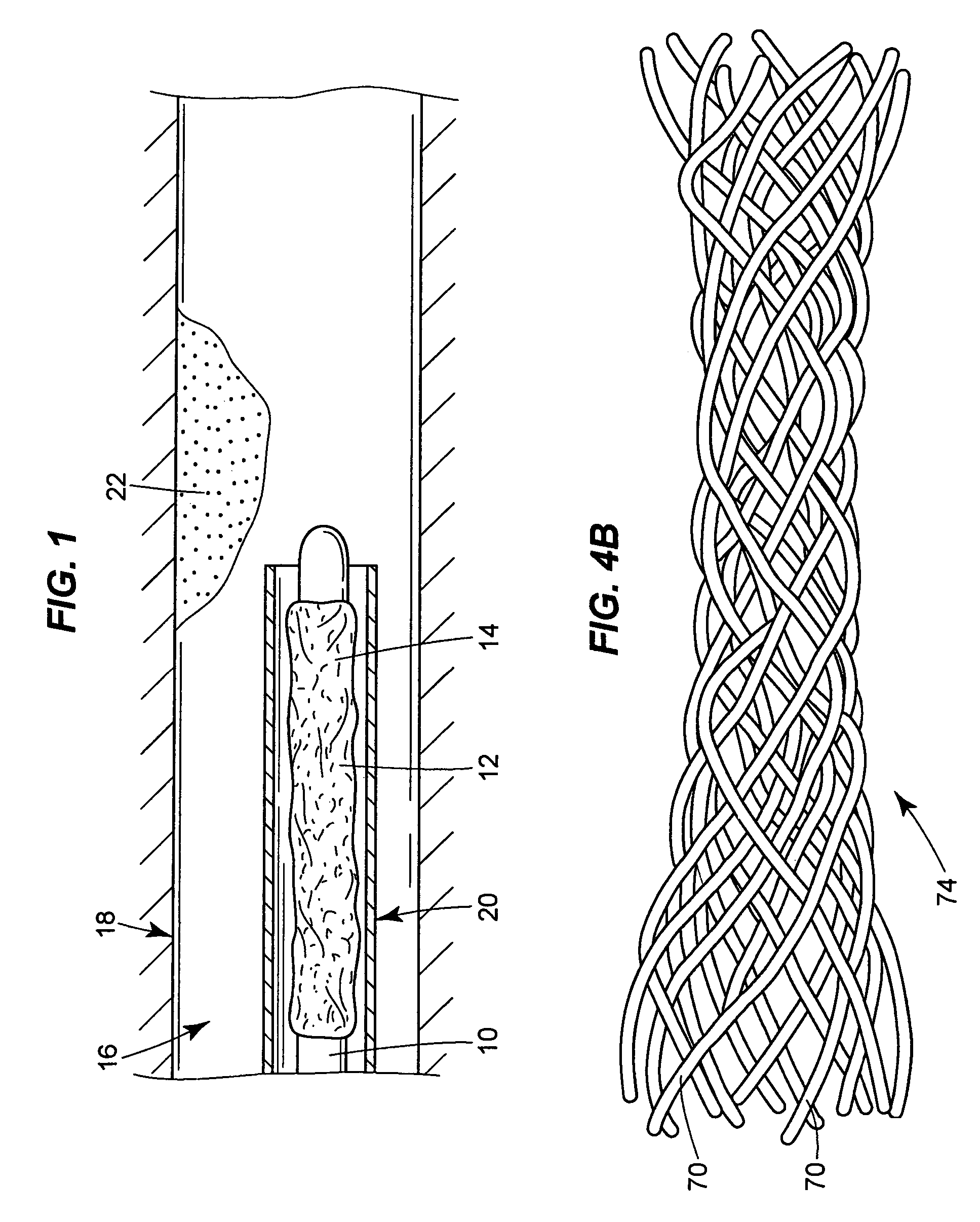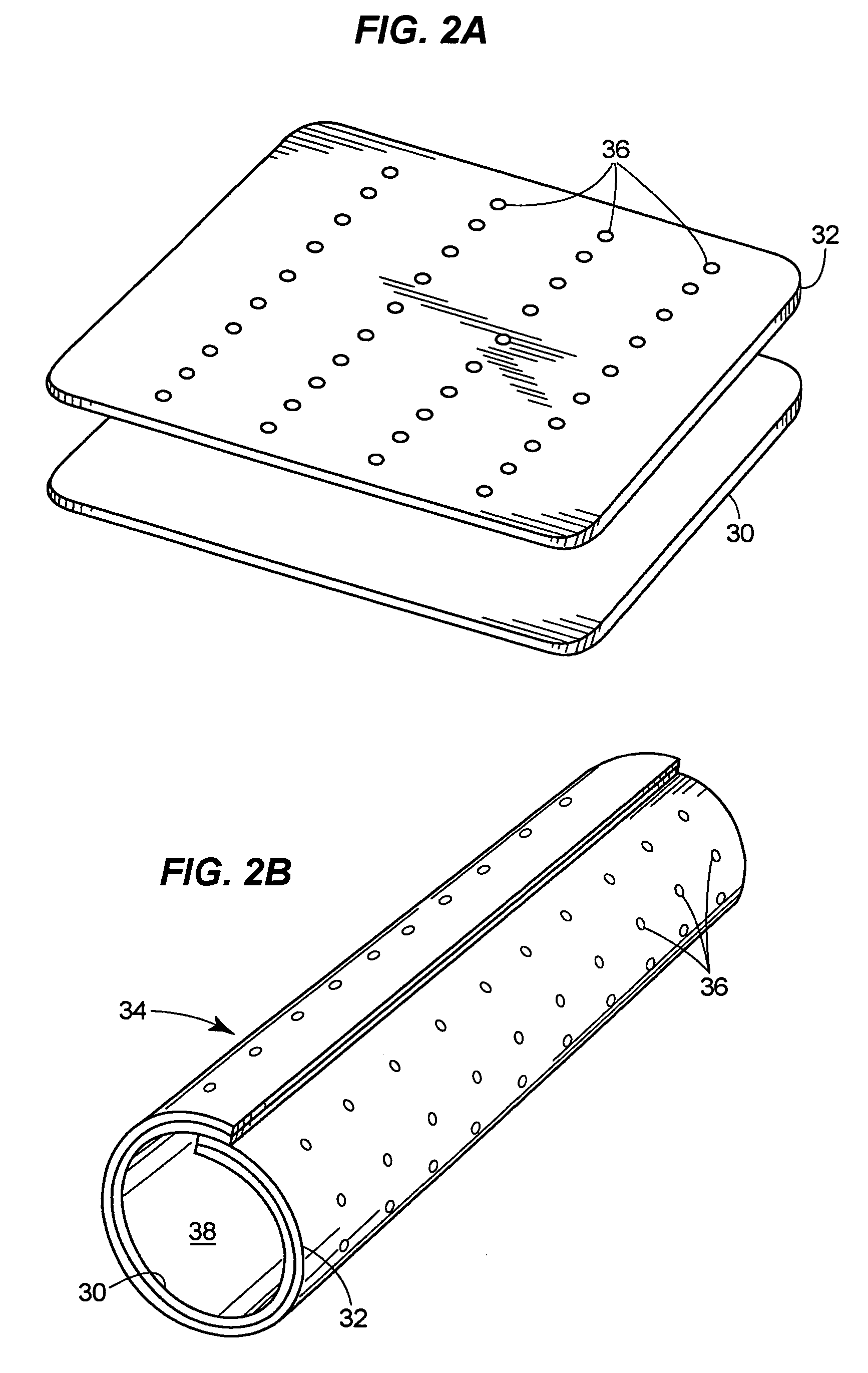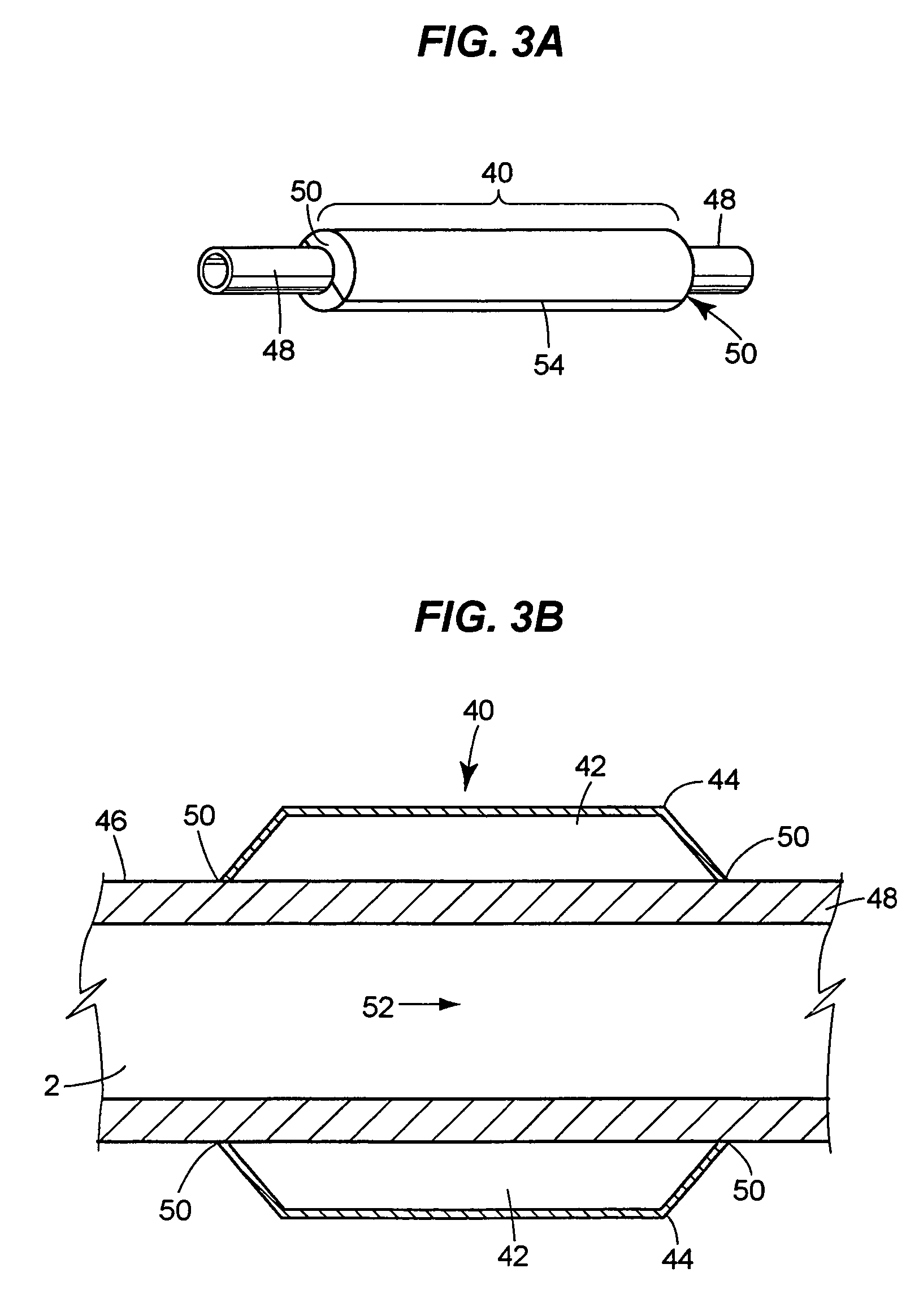Use of VEGF-D gene to prevent restenosis
a technology of vegf-d and restnosis, applied in the field of cardiac medicine, can solve the problems of refractory mechanical and pharmacologic therapy, restenosis, and coronary artery disease, and achieve the effect of facilitating the use of the method
- Summary
- Abstract
- Description
- Claims
- Application Information
AI Technical Summary
Benefits of technology
Problems solved by technology
Method used
Image
Examples
example 1
Use of Adenovirus-Mediated VEGF-C Gene Transfer to Prevent Restenosis
[0085]The following experiments, performed in vivo in a rabbit restenosis model, demonstrate the efficacy of adenovirus-mediated intravascular VEGF-C gene transfer for the prevention of post-angioplasty restenosis.
[0086]A. Materials and Methods
[0087]1. Adenoviral Constructs.
[0088]An adenovirus plasmid containing a cDNA encoding the complete human prepro-VEGF-C open reading frame operably linked to a cytomegalovirus (CMV) promoter and human growth hormone polyadenylation signal sequence was constructed as follows. A DNA fragment comprising a CMV promoter sequence was prepared by digesting the pcDNA3.1+ vector (Invitrogen) with Sal I and filling-in the 5′ overhangs with the Klenow enzyme. The CMV promoter (nucleotides 5431-911) was excised from the vector with Hind III and isolated. A full-length human VEGF-C cDNA containing the 1997 bp sequence specified in SEQ ID NO: 1 (as well as less than 50 bases of additional n...
example 2
Comparative Example Demonstrating that Anti-Restenosis Effects of VEFG-C Appear Superior to Those of VEGF
[0101]The following experiments demonstrate the efficacy of adenovirus-mediated intravascular VEGF and VEGF-C gene transfer for the prevention of post-angioplasty restenosis, and demonstrates that VEGF-C appeared to provide a superior therapeutic efficacy compared to VEGF.
[0102]A. Materials and Methods
[0103]1. Adenoviral Constructs.
[0104]VEGF (murine VEGF-A164; SEQ ID NO: 18) adenovirus was constructed using the same promoter as the VEGF-C construct, and following similar procedure as described in Example 1. The VEGF-A164 adenoviral construct was produced in 293T cells and concentrated essentially as described in Example 1, and analyzed to be free of helper virus, lipopolysaccharides, and bacterial contaminants.
[0105]2. Animal Model.
[0106]Sixty three New Zealand White rabbits were divided into two major groups, the first having 0.25% cholesterol diet for two weeks and balloon den...
example 3
Expression of Transfected VEGFs in the Aortic Wall
[0117]Using the aortic segments from the same experimental animals described in Example 2, mRNA expression of lacZ, VEGF-C and VEGF (murine VEGF-A164) was analyzed in aortic tissue after gene transfer. Total RNA was extracted from transfected aortic segments using Trizol Reagent (Gibco-BRL), and 2 μg of RNA was used for cDNA synthesis. Primers for lacZ, VEGF-C and VEGF were designed to distinguish between endogenous and transduced genes by selecting the 5′ primers from the CMV promoter and the 3′ primers from the coding regions.
[0118]For lacZ amplification, primers were: 5′ primer 5′-TTGGAGGCCTAGGCTTTTGC-3′ (SEQ ID NO: 5) and 3′ primer 5′-ATACTGTCGTCGTCCCCTCA-3′ (SEQ ID NO: 6). The first PCR cycle was an initial incubation at 96° C. for 4 minutes followed by 80° C. for 3 minutes during which the DNA polymerase was added. This was followed by 30 cycles, each consisting of 94° C. for 45 seconds, 58° C. for 45 seconds, and 72° C. for 50...
PUM
 Login to View More
Login to View More Abstract
Description
Claims
Application Information
 Login to View More
Login to View More - R&D
- Intellectual Property
- Life Sciences
- Materials
- Tech Scout
- Unparalleled Data Quality
- Higher Quality Content
- 60% Fewer Hallucinations
Browse by: Latest US Patents, China's latest patents, Technical Efficacy Thesaurus, Application Domain, Technology Topic, Popular Technical Reports.
© 2025 PatSnap. All rights reserved.Legal|Privacy policy|Modern Slavery Act Transparency Statement|Sitemap|About US| Contact US: help@patsnap.com



